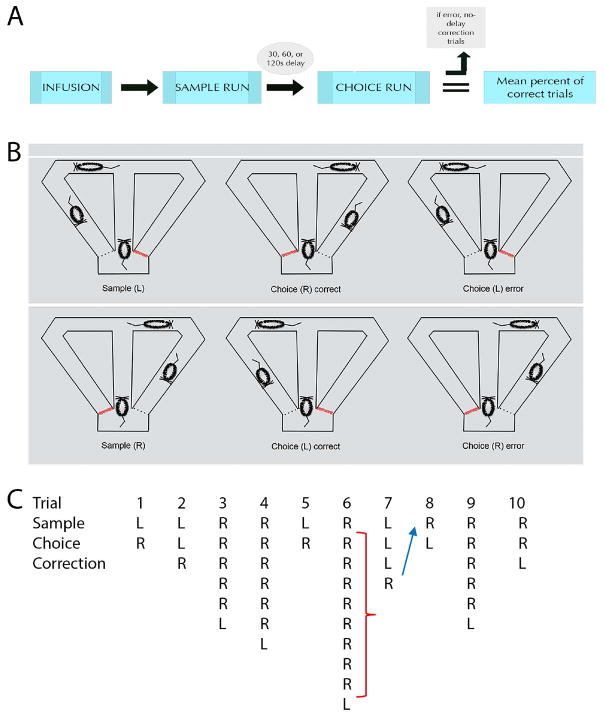Figure 2.
The experimental design of the delayed nonmatch to sample (DNMS) task used in the present experiment is shown using a flowchart (A) and schematic illustrations (B). Once trained to asymptotic levels, rats were infused with one of four agents (0.25 mg/mL muscimol, 0.50 mg/mL muscimol, procaine, or PBS vehicle) and following a period of either 30 min (muscimol) or 5 min (procaine), rats were given 10 trials, each of which included a sample and choice run. In the sample run, rats could freely choose between the left or right goal arms to retrieve a food reward. Following a delay of either 30, 60, or 120s, rats were given a choice run, whereby only the opposite arm was baited with a reward. If rats made an error on the choice run, they were given no-delay correction runs, whereby they could make repeated runs down the maze until the correct arm was chosen and reward was retrieved. Red lines indicate closed doors at all times in the startbox prior to sample or choice runs. Dotted lines indicate closed doors, one of which will be opened once rats make a directional choice during sample or choice runs. An example of a testing session following a muscimol injection for a representative case is depicted in (C), showing three distinct types of errors in the study. In trial 2, a failure to alternate following the delay between the sample and choice run is denoted as a working memory error and would be marked as incorrect. Trial 6 depicts examples of perseverative errors (red bracket) following a working memory error, whereby after making an incorrect choice run following a delay, the rat persists in making incorrect runs during no-delay correction trials despite the absence of a reward. Lastly, trial 8 depicts an example of a win-shift failure (blue arrow), which is a failure to alternate in a subsequent sample run after making the correct directional selection on the previous trial.

